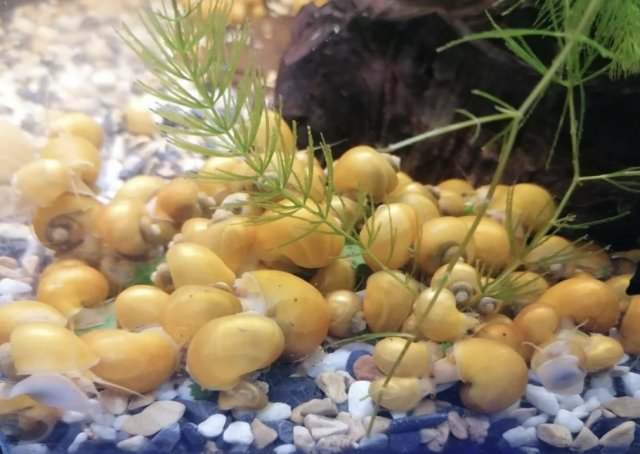You are being given a 'fancy' name for common apple snails. Most new world apple snails are in the genus Pomacea, family Ampullariidae (as opposed to old world, which are in the genera Pila and Lanistes). However, Pomacea spp have been introduced nearly worldwide and include the most frequently kept apple snails in Aquaria anywhere. They are bred extensively for the aquarium trade mainly in Asian countries, and at least 2 non-native species are established in the wild in the southern USA and in many other places. Among various types of major agricultural damage they do in the wild is, for instance serious damage in rice paddies.
So, don't look too much for information on Pomacea bridgesii, but for information on apple snails. Many apple snails sold as P. bridgesii are instead P. maculata and P. canaliculata (although P. bridgesii as well) and are some of the worst molluscan invasive species anywhere. In part due to these (good) reasons, in some places there are strongly discouraged (or prohibited), even though they are available in pest stores and internet sources. By the way, the North American and Asian native 'Mystery snails' are in the genus Viviparus, and the family Viviparidae, and are very similar looking, and their biology is also similar.
All of these snails (Ampullariidae and Viviparidae) have an operculum (or 'trap door' which allows them to seal off the aperture when they retreat into the shell), have separate sexes and copulate, and lay eggs outside of the water (upper part of aquaria, pond vegetation, etc.).
In the aquarium, they are sort of neat, but WILL eat plants, and are poop machines, similar to plecos. If one has a single specimen in a tank is one thing, but a colony will run you out of house and ability to keep up with food and water quality.
I do not know if freshwater puffers in aquaria will eat the adults, but certainly will eat young ones.
I hope these notes help you.







